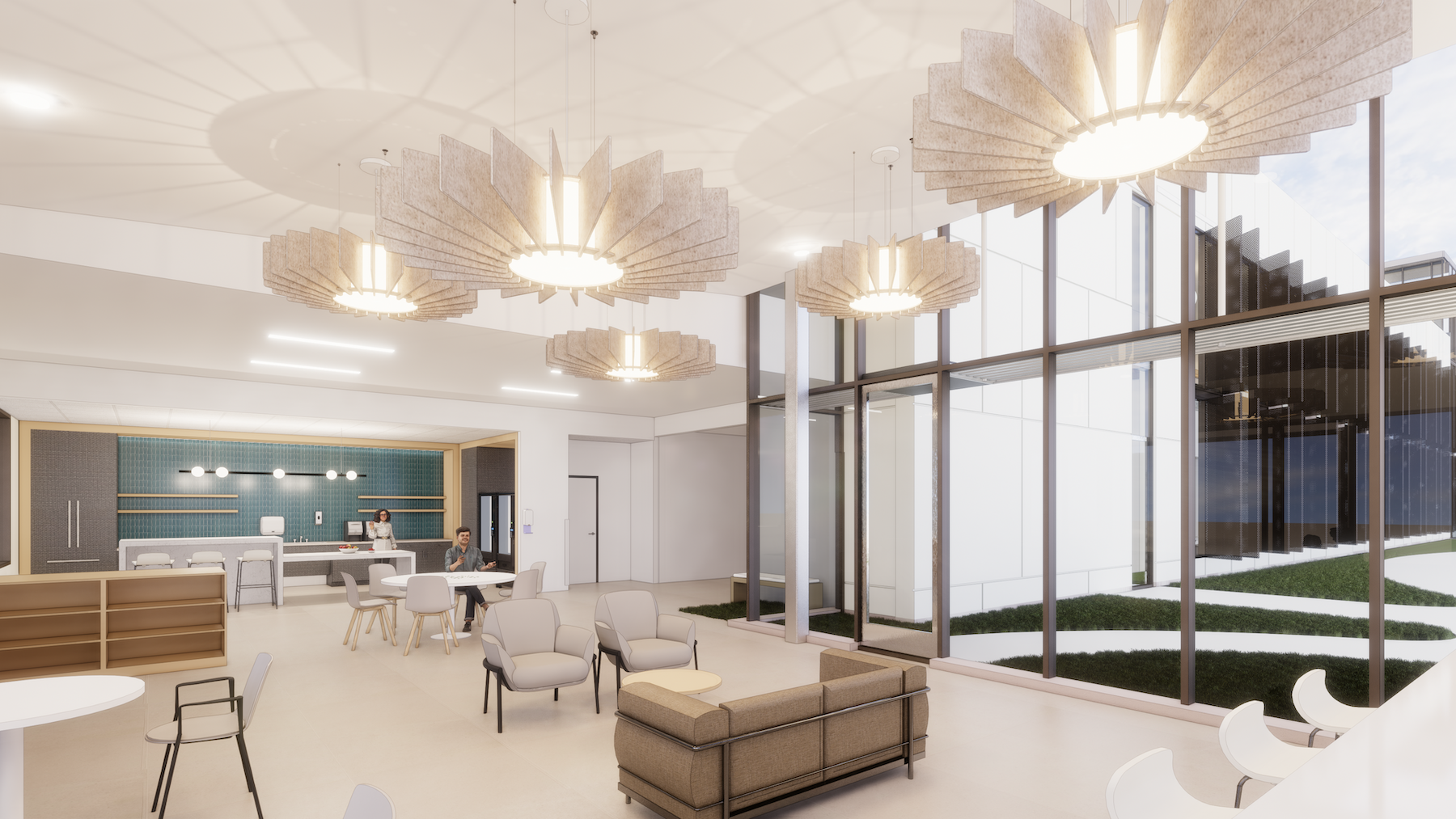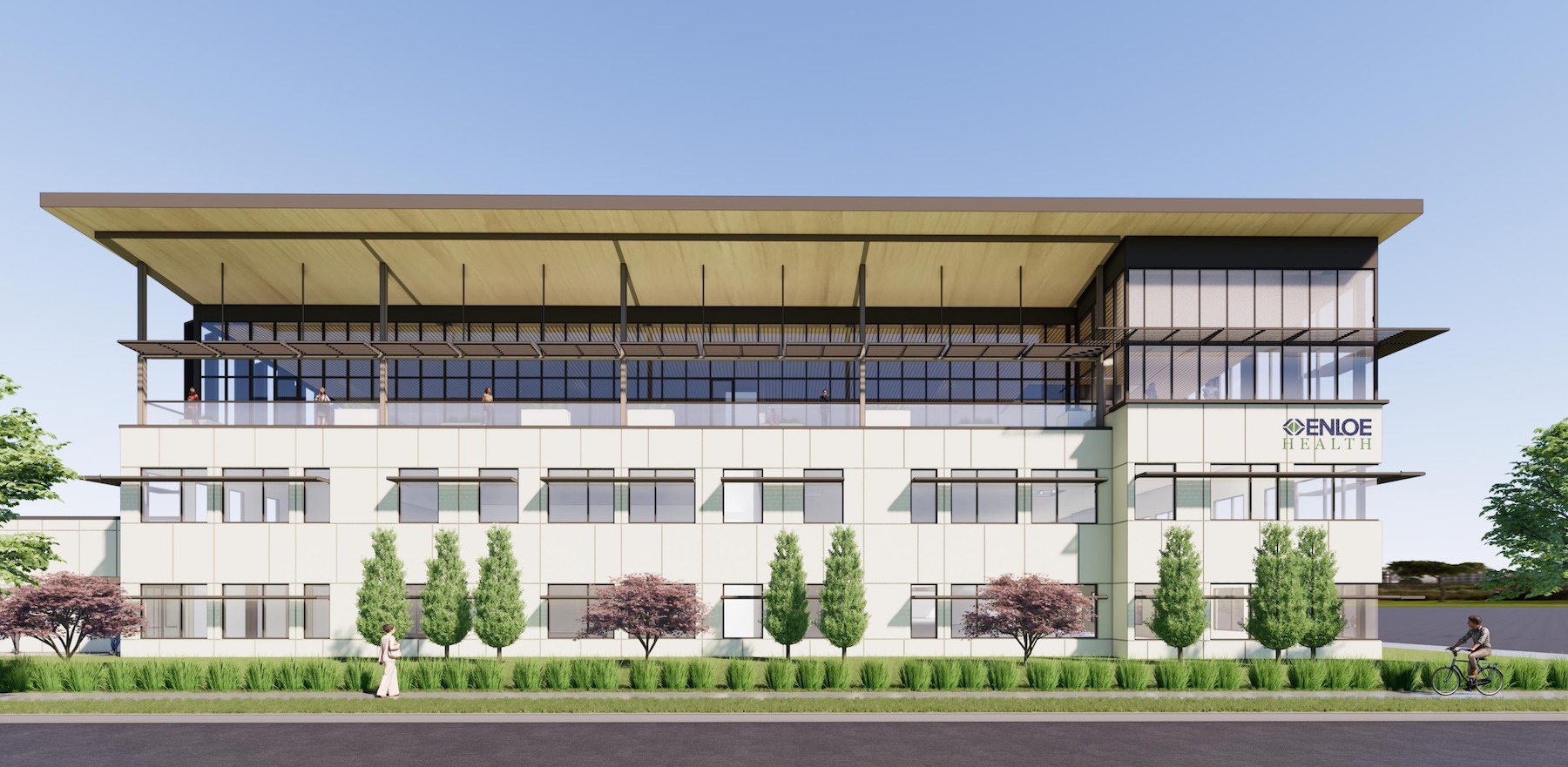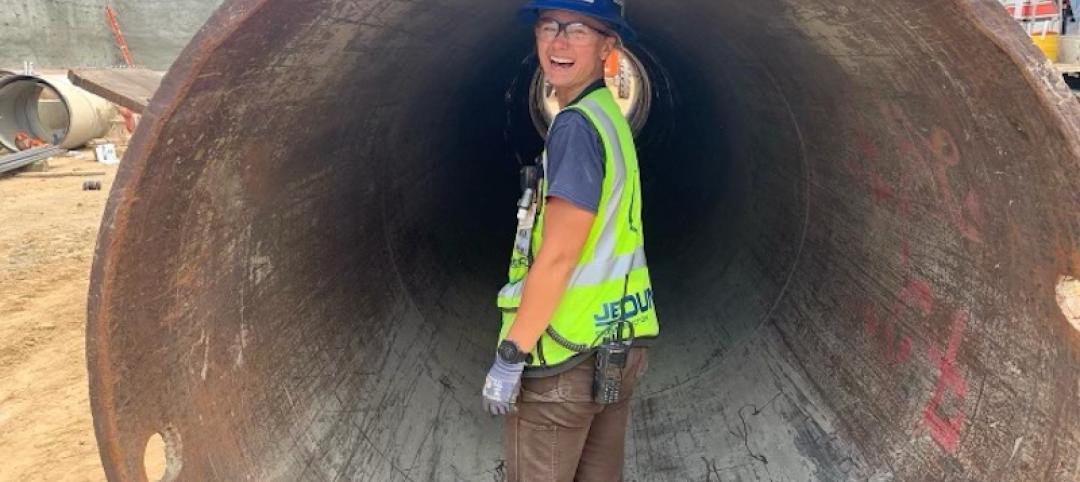Design-build and, to a somewhat lesser degree, Integrated Project Delivery (IPD) have become increasingly popular and common contract platforms for healthcare projects. These agreements promise greater efficiency and share the profit risk on new construction among developers, health systems, and AEC firms.
Add to that list of options Collaborative Project Delivery (CPD), which Covalus—a Dallas-based healthcare project management consultant that has pioneered this contractual initiative—says simplifies IPD in ways that make it more attractive to participants without sacrificing IPD’s benefits.
Also see: Healthcare construction costs for 2024
Covalus claims that CPD has been applied to more than $3 billion in healthcare projects. One of these is Enloe Health’s Comprehensive Cancer Center, a 107,000-sf outpatient building on 13 acres in Chico, Calif. This three-story project, valued at $154 million, broke ground this month, and is scheduled for completion in Spring of 2026.
According to this project’s general contractor Swinerton, CPD is different from other contractual agreements in that it allows team members to contribute a specific fee that they can earn back by achieving agreed-upon performance thresholds. “This simplified form of agreement eliminates the need for complex, multiparty legal and insurance mechanisms,” said Swinerton in a prepared statement.
Separate contracts, bridged together
Enloe Health’s previous experiences with projects under conventional design-bid-build contracts had left a bad taste in its mouth because those contracts opened the door for change orders that impacted negatively on the project’s cost, explained Kevin Woodward, Enloe Health’s chief financial officer.
There was also some urgency in finding the right project manager for its proposed Comprehensive Cancer Center. The region that encompasses Chico has one of the highest rates of cancer-related deaths in California. However, said Woodward, 60 percent of the region’s cancer patient population was bypassing Enloe Health’s facilities because they didn’t have the care capacity to handle that level of patient volume.
Enloe Health worked with ECG Management Consultants, a division of Siemens Healthineers, to conduct a space analysis to determine the size and prospective cost of a new CCC. After its board signed off on the facility, Enloe partnered with Covalus, which Woodward said had more-refined costing tools, and a track record with project management under CPDs.
By that time, HGA was already attached as the project’s design-architect. James Willsie, Principal and Associate Vice President with HGA, explained in an email to BD+C how CPDs differ from other delivery contracts:
“Typically with design building, there is one contract between the owner and the contractor, with the design team as a sub. With IPD, typically there is a three-way contract [among] the owner, contractor, and architect, with a target cost and schedule. There is profit at risk for the contractor, architect, and typically further downstream [for] consultants and subs, [which] becomes a project contingency.”
For a CPD, on the other hand, says Willsie, “the owner has a contract directly with the architect, a separate contract directly with the contractor, and a contract directly with the owner’s representative. There is also a multiple-party contract among all four parties that sets up profit at risk and enhanced profit put up by the owner.” The profit at risk and incentive pool are distributed upon meeting prearranged targets for schedules, budget, and a regularly administered feedback survey of the owner. The incentive pool is pushed through to key consultants and subcontractors, says Willsie.
Additional collaborators on the Enloe Health project include Buehler Engineering (SE), ECOM Engineering (electrical and low voltage engineering), Weston & Associates (M/P engineering), Criterion (medical equipment planning), NorthStar (CE), and Marquis (security).
Similar to design-build and IPD, CPD utilizes big room meetings, Target Value Delivery, RO logs, and other lean delivery principles, says Willsie.

Cost predictability a goal
Any level of contractual collaboration requires give and take from all participants. That includes a strategic vetting of partners for purposes of compatibility; early engagement of project team members to define objectives and goals, as well as performance parameters; and ongoing communication among all stakeholders, according to a December 31, 2022 posting by AIA Contract Documents, which are the starting points for Covalus’ CPDs.
During the design process for Enloe Health’s new cancer center, HGA’s Design Insight Group used research and benchmarking to cross-check and validate decisions. Enloe provided data to modify designs and determine how they might improve space programming. “The data we review is critical to achieving operational efficiency and treatment outcomes while improving the experiences of patients, physicians, and medical support staff alike,” said Jennifer Ries, HGA’s Senior Medical Planner, in a statement posted on the firm’s website.
In an interview with BD+C, Mark Chenoweth, Founder and Principal of Covalus, said that his firm started using CPD contracts about seven or eight years ago. He explained that CPDs combine the benefits and efficiencies of IPDs with traditional delivery methods. “CPDs preserve traditional contractual arrangements, and the contracts are tied together by bridge agreements,” Chenoweth elaborated. He added that CPDs stipulate a guaranteed maximum price for a project, which IPDs do not. (The GMP for Enloe Health’s project will be nailed down on June 1, said Woodward.)
Chenoweth said that owner expectations of CPDs revolve around cost predictability, value, speed to market, and team performance.
“CPDs set realistic value for the work and process,” said Chris Morris, Vice President-National Healthcare at Swinerton, for which the Enloe Health project is its first under an CPD contract. “If you have a good roadmap, the team feels success.” Morris said that one of the goals for these incentives-based team collaborations is to avoid “non-rewarding” work, like value engineering.
Concise construction management
Chenoweth explained that the fee that contractual partners pay as part of the contract is a percentage of the cost of work and a portion of the minimum amount of the profit at risk; a kind of buy-in, he agreed. For the Enloe Health project, every firm under the CPD contract will receive at least 1.5 percent of their overhead. (That percentage, said Woodward, is one-third of the profit-at-risk for the contract’s participants. In Swinerton’s case, the 1.5 percent is equivalent to about $250,000, he said.)
Woodward, whom BD+C interviewed yesterday, said that Enloe Health has been satisfied with the results from the CPD. “It’s been a great project, and we’re right on track.” Woodward has been particularly impressed with the problem solving in big room meetings, Covalus’ representation on behalf of the owner, as well as with the “visibility” that Enloe has had into the bids from all of the trades.
The new Comprehensive Cancer Center in Chico will include three linear accelerator vaults and a 56-bay infusion center, according to Jolene Francis, Enloe Health’s Vice President of Philanthropy and Communications. Enloe expects the new center to create between 75 and 100 permanent jobs.
Chenoweth said that Covalus is managing other healthcare projects under CPD contracts in the Midwest and East Coast, and is talking with six other health systems. Morris speculated that healthcare sector has been amenable to these kinds of contracts because they “add structure to a complicated business that is ripe for change. CPDs are more concise and consistent.”
Related Stories
Healthcare Facilities | Aug 10, 2023
The present and future of crisis mental health design
BWBR principal Melanie Baumhover sat down with the firm’s behavioral and mental health designers to talk about how intentional design can play a role in combatting the crisis.
Market Data | Aug 1, 2023
Nonresidential construction spending increases slightly in June
National nonresidential construction spending increased 0.1% in June, according to an Associated Builders and Contractors analysis of data published today by the U.S. Census Bureau. Spending is up 18% over the past 12 months. On a seasonally adjusted annualized basis, nonresidential spending totaled $1.07 trillion in June.
Healthcare Facilities | Aug 1, 2023
Top 10 healthcare design projects for 2023
The HKS-designed Allegheny Health Network Wexford (Pa.) Hospital and Flad Architects' Sarasota Memorial Hospital - Venice (Fla.) highlight 10 projects to win 2023 Healthcare Design Awards from the American Institute of Architects Academy of Architecture for Health.
Designers | Jul 25, 2023
The latest 'five in focus' healthcare interior design trends
HMC Architects’ Five in Focus blog series explores the latest trends, ideas, and innovations shaping the future of healthcare design.
Market Data | Jul 24, 2023
Leading economists call for 2% increase in building construction spending in 2024
Following a 19.7% surge in spending for commercial, institutional, and industrial buildings in 2023, leading construction industry economists expect spending growth to come back to earth in 2024, according to the July 2023 AIA Consensus Construction Forecast Panel.
Healthcare Facilities | Jul 19, 2023
World’s first prefab operating room with fully automated disinfection technology opens in New York
The first prefabricated operating room in the world with fully automated disinfection technology opened recently at the University of Rochester Medicine Orthopedics Surgery Center in Henrietta, N.Y. The facility, developed in a former Sears store, features a system designed by Synergy Med, called Clean Cube, that had never been applied to an operating space before. The components of the Clean Cube operating room were custom premanufactured and then shipped to the site to be assembled.
Sponsored | | Jul 12, 2023
Keyless Security for Medical Offices
Keeping patient data secure is a serious concern for medical professionals. Traditional lock-and-key systems do very little to help manage this problem, and create additional issues of their own. “Fortunately, wireless access control — a keyless alternative — eliminates the need for traditional physical keys while providing a higher level of security and centralized control,” says Cliff Brady, Salto Director of Industry Sectors Engagement, North America. Let’s explore how that works.
Healthcare Facilities | Jul 10, 2023
The latest pediatric design solutions for our tiniest patients
Pediatric design leaders Julia Jude and Kristie Alexander share several of CannonDesign's latest pediatric projects.
Healthcare Facilities | Jun 27, 2023
Convenience ranks highly when patients seek healthcare
Healthcare consumers are just as likely to factor in convenience as they do cost when deciding where to seek care and from whom, according to a new survey of 4,037 American adults about their attitudes and preferences as patients. The survey, conducted from April 19-28 by JLL, in many ways confirms the obvious: that older generations seek preventive care more often than younger generations; that insurance coverage is a primary driver for choosing a provider or hospital; and that the quality of service affects the patient experience.
Healthcare Facilities | Jun 27, 2023
A woman-led CM team manages the expansion and renovation of a woman-focused hospital in Nashville
This design-build project includes adding six floors for future growth.

















